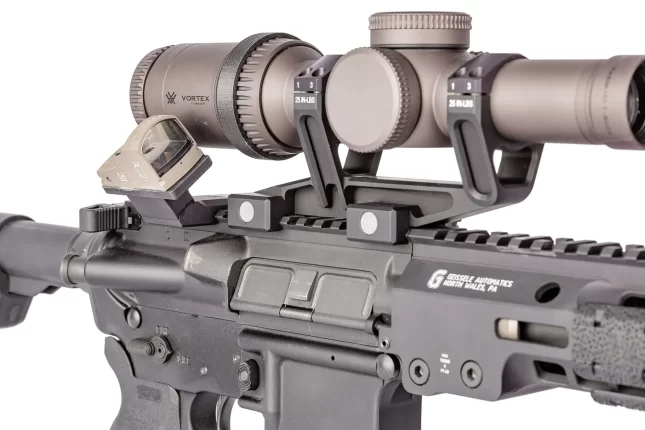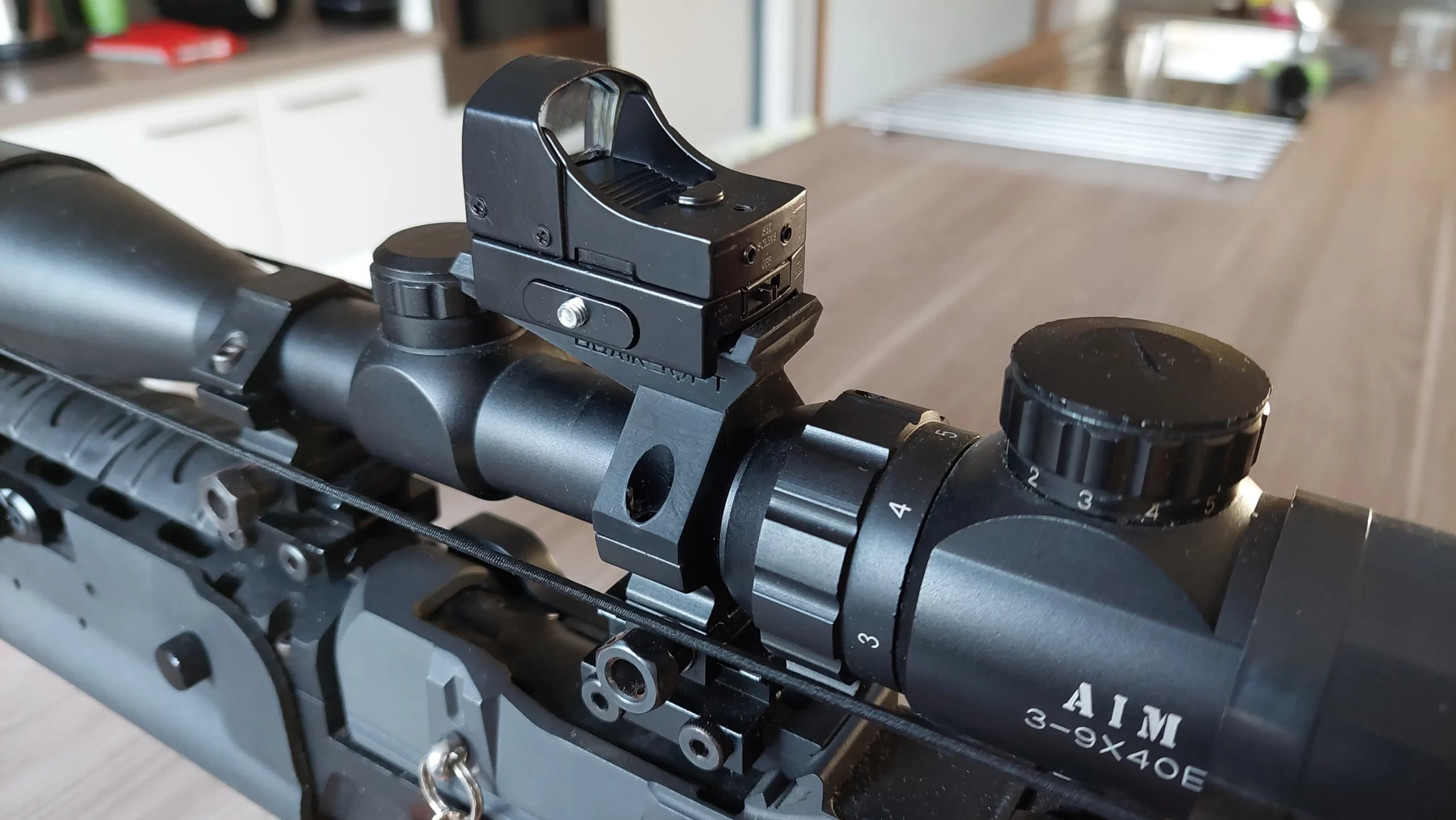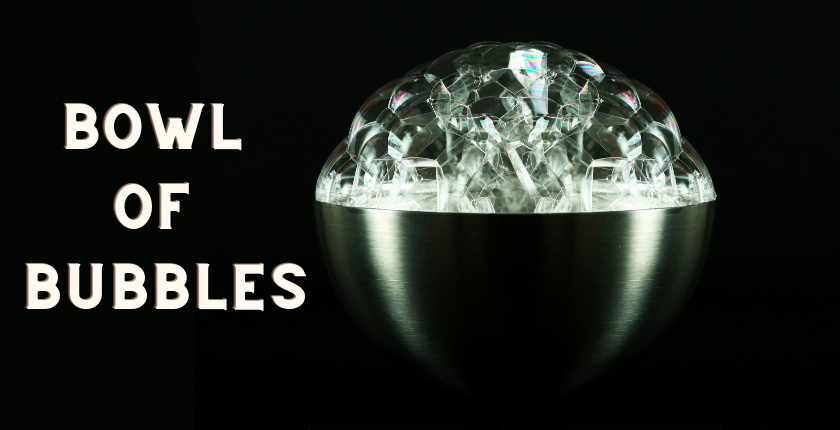There are three ways to mount red dot sights on pistols. Each has its advantages and drawbacks.
Pistols designed for red dot optics feature a set of grooves, dimples, or lugs milled into their slide. These match up with various red dot optics through a set of adapter plates.
Rail Type
As the name suggests, red dot optics are sights that lack magnification. They place a small red dot in front of your sight picture to assist you in aligning the target.
Many of today’s guns are available with specific spots milled in the slide or receiver to mount a red dot sight. You simply consult your firearm owner’s manual or shop for a rail mount with the footprint that matches your gun and chosen dot sight.
You can also get dedicated red dot optic mounts for specific brands of pistols. These mounts replace the factory rear sight dovetail and allow you to use your red dot without needing tall backup sights. This option is popular for shooters who want to avoid machining their slides.
Sight Picture
In the past, firearms were shot using traditional iron sights (rear and front sight). These were lined up to get your point of aim. While there is nothing wrong with this shooting method, red dot optics offer a more straightforward way to get a sight picture.
This mount style attaches to the pistol frame instead of replacing or modifying the slide. This option often eliminates the ability to carry a concealed weapon, but it can be much more affordable than installing a new slide.
When you have the mount installed, test the alignment of the optic by looking through it and verifying that the reticle or crosshairs are centered in the viewfinder. Torque the screws to the specified values to ensure that they stay tight and do not loosen over time.

Height
The height of the optic mount determines whether the red dot sight will co-witness with your firearm’s iron sights. This allows the user to maintain a solid cheek weld while enjoying the benefits of red dots’ rapid acquisition and parallax-free shooting.
Absolute co-witness mounts are shorter in height and place the front sight post within the red dot’s field of view (FOV), so they appear to line up with one another. This setup is ideal for users who want to keep their iron sights as a backup or for those wearing electronic earpro/communications headsets, night vision goggles, or heavy-duty gear like plates or tactical armor.
Pistol frame mounts attach to the pistol’s frame rather than the slide and are designed for competitive shooters, home defense, and duty carry. These mounts add more weight to the gun and may cause it to jam if overloaded, so care must be taken when choosing a mounting option for your pistol.
Weight
Red dot sights make it easy to increase pistol accuracy and are helpful in competitive shooting and target practice. Using the proper mount is essential; however, a mounting plate that is too tall can place unnecessary stress on your weapon and optics.
Many guns have specific spots milled into the slide or receiver where a mount can attach. Consult your owner’s manual to find out what type of footprint your gun has, and then shop for a red dot sight that fits that footprint.
Full-length rails are the heaviest options and elevate your optic above the bore. This makes them ideal for tactical applications where the pistol is used as a rough aiming tool before switching to a magnifying scope for precision shots.
Also Read: Vegan Night Market NYC: Everything You Need to Know
Adapter Plates of Red Dot
Adapter plates allow you to mount red dot sights on pistols that aren’t factory-optics-ready. This can be a good option for law enforcement or military units not wanting to invest in all-new equipment.
They are also the heaviest of all the mounting options, and because they require a rail on which the dot sight mounts, they elevate the optic noticeably higher above the gun’s bore.




